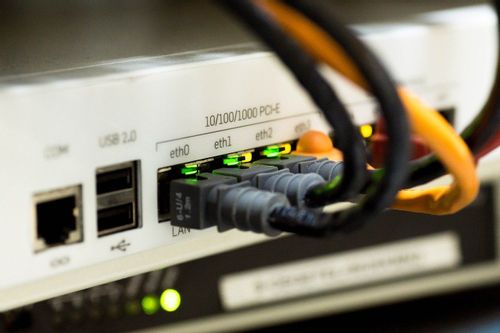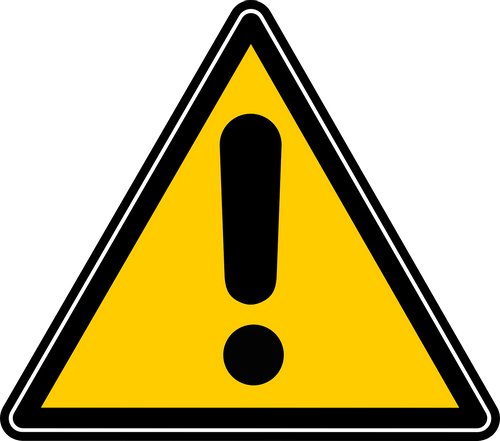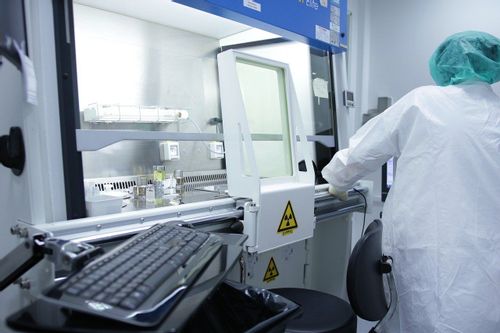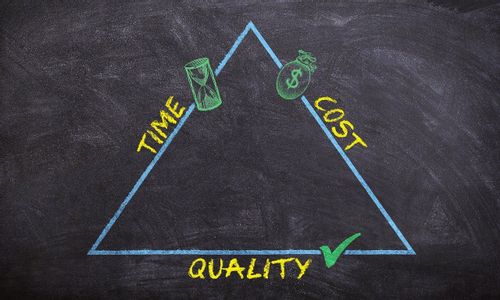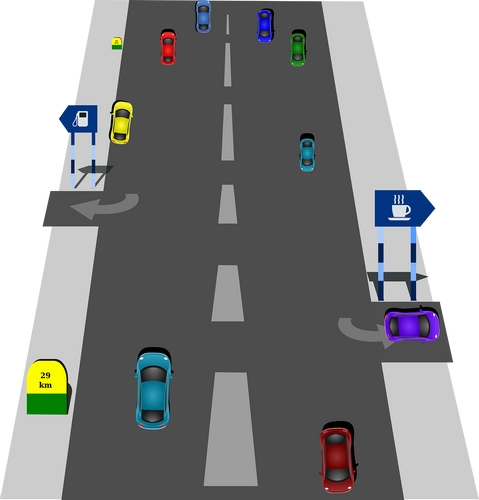Standards Packages
iTeh together with SIST has developed and compiled a comprehensive collection of standard packages to support your standard requirements. Our packages cover an array of content that includes quality management, risk management, road vehicles, machine safety, and much more. With over 200 packages to choose from, you are sure to find a collection to suit your standard needs.
Latest Standards
ISO 5832-1:2016 specifies the characteristics of, and corresponding test methods for, wrought stainless steel for use in the manufacture of surgical implants.
NOTE 1 The mechanical properties of a sample obtained from a finished product made of this alloy can differ from those specified in this part of ISO 5832.
NOTE 2 The alloy described in this part of ISO 5832 corresponds to UNS S31673 referred to in ASTM F138/ASTM F139 and to alloy code 1.4441 given in the withdrawn DIN 17443.
- Standard14 pagesEnglish languagesale 10% offe-Library read for1 day
- Draft11 pagesEnglish languagesale 10% offe-Library read for1 day
This document provides an overview, risk assessment, minimum security requirements and extended security guidelines for code-scanning payment in which the payer uses a mobile device to operate the payment transaction. This document is applicable to cases where the payment code is used to initiate a mobile payment and presented by either the payer or the payee. The following is excluded from the scope of this document: — details of payer and payee onboarding; — details of the supporting payment infrastructure, as described in 5.1.
- Standard30 pagesEnglish languagesale 15% off
- Draft30 pagesEnglish languagesale 15% off
- Draft30 pagesEnglish languagesale 15% off
This document specifies the minimum requirements for textile-reinforced, smooth-bore rubber water-suction and discharge hoses and hose assemblies. Three types of hoses and hose assemblies are specified according to their operating duty requirements, i.e. their ambient and water temperature ranges: — ambient temperatures: −25 °C to +70 °C; — water temperatures during operation: 0 °C to +70 °C.
- Standard10 pagesEnglish languagesale 15% off
- Standard11 pagesFrench languagesale 15% off
- Draft11 pagesEnglish languagesale 15% off
- Draft11 pagesEnglish languagesale 15% off
This document describes a basic role and functional model for mobility services using low Earth orbit (LEO) satellite systems for ITS services. This document provides: a) a role and functional model using a LEO satellite system for mobility services; b) a description of the concept of operations (CONOPS), and the relevant role models; c) a conceptual architecture between actors involved; d) references for the key documents on which the architecture is based; e) a mobility service use case summary. In-vehicle control systems are not within the scope of this document. This document scope is limited to mobility services using physical and digital infrastructure. NOTE Physical infrastructure facilities include for example, battery charging facilities, dynamic charging facilities for battery electric vehicles, physical infrastructure markings, physical traffic regulation signs, mobility monitoring facilities, emergency response service support facilities, traffic operation control centre facilities, fee collection service facilities (e.g. road usage fee), battery electric vehicle charging facilities, online reservation and online mobility usage fee payment facilities, and other infrastructure platform facilities that support ITS mobility services.
- Technical report17 pagesEnglish languagesale 15% off
- Draft18 pagesEnglish languagesale 15% off
- Draft18 pagesEnglish languagesale 15% off
This document specifies the evaluation methods for size and concentration indices of fine bubbles (FBs) generated through a nozzle. It only applies to FB dispersions (FBDs) in water generated through the nozzle. It describes the sampling method for a FBD from the nozzle into the retention container and the measurements of size and concentration indices. Major applications of the equipment include components of various industrial water systems and consumer baths and kitchens.
- Standard21 pagesEnglish languagesale 15% off
- Draft21 pagesEnglish languagesale 15% off
- Draft21 pagesEnglish languagesale 15% off
This document specifies the determination of phytase activity in feeding stuff samples, including feed raw materials from plant origin, compound feeds (complete, complementary, mineral feeds), premixtures and feed additives. The method is applicable to, and is collaboratively validated for, the determination of phytase activity in complete feed, complementary feed including mineral feed, premixtures and feed additives. The method does not distinguish between phytase added as a feed additive and endogenous phytase already present in the feed materials. Therefore, the method is also applicable for feed materials from plant origin. The method does not apply to evaluating or comparing the in vivo efficacy of the phytase product. It is not a predictive method of the in vivo efficacy of phytases present on the market as they can develop different in vivo efficacy per unit of activity.
- Standard22 pagesEnglish languagesale 15% off
- Standard24 pagesFrench languagesale 15% off
- Draft22 pagesEnglish languagesale 15% off
- Draft22 pagesEnglish languagesale 15% off
IEC 61970-457:2024 specifies a standard interface for exchanging dynamic model information needed to support the analysis of the steady state stability (small-signal stability) and/or transient stability of a power system or parts of it. The schema(s) for expressing the dynamic model information are derived directly from the CIM, more specifically from IEC 61970-302.
The scope of this document includes only the dynamic model information that needs to be exchanged as part of a dynamic study, namely the type, description and parameters of each control equipment associated with a piece of power system equipment included in the steady state solution of a complete power system network model. Therefore, this profile is dependent upon other standard profiles for the equipment as specified in IEC 61970-452: CIM static transmission network model profiles, the topology, the steady state hypothesis and the steady state solution (as specified in IEC 61970-456: Solved power system state profiles) of the power system, which bounds the scope of the exchange. The profile information described by this document needs to be exchanged in conjunction with IEC 61970-452 and IEC 61970-456 profiles’ information to support the data requirements of transient analysis tools. IEC 61970-456 provides a detailed description of how different profile standards can be combined to form various types of power system network model exchanges.
This document supports the exchange of the following types of dynamic models:
• standard models: a simplified approach to exchange, where models are contained in predefined libraries of classes interconnected in a standard manner that represent dynamic behaviour of elements of the power system. The exchange only indicates the name of the model along with the attributes needed to describe its behaviour.
• proprietary user-defined models: an exchange that would provide users the ability to exchange the parameters of a model representing a vendor or user proprietary device where an explicit description of the model is not described in this document. The connections between the proprietary models and standard models are the same as described for the standard models exchange. Recipient of the data exchange will need to contact the sender for the behavioural details of the model.
This document builds on IEC 61970-302, CIM for dynamics which defines the descriptions of the standard dynamic models, their function block diagrams, and how they are interconnected and associated with the static network model. This type of model information is assumed to be pre-stored by all software applications hence it is not necessary to be exchanged in real-time or as part of a dynamics model exchange.
This second edition cancels and replaces the first edition published in 2021. This edition constitutes a technical revision.
This edition includes the following significant technical changes with respect to the previous edition:
a) The majority of issues detected in IEC 61970-302:2018 and fixed in IEC 61970-302:2022 led to update of this document;
b) IEEE 421.5-2016 on Excitation systems is fully covered;
c) IEEE turbine report from 2013 was considered and as a result a number of gas, steam and hydro turbines/governors are added;
d) IEC 61400-27-1:2020 on wind turbines is fully incorporated;
e) WECC Inverter-Based Resource (IBR) models, Hybrid STATCOM models and storage models are added;
f) The user defined models approach was enhanced in IEC 61970-302:2022 adding a model which enables modelling of a detailed dynamic model. This results in the creation of two additional pr
- Standard780 pagesEnglish languagesale 10% offe-Library read for1 day
The document is applicable to the brake pad holders with which the rail vehicles of main-line railways, regional and suburban railways are fitted. Brake pad holders pursuant to this document are to be made from ferrous materials e.g. cast iron, cast steel or forged steel. Brake pad holders made of non-ferrous materials are not subject of this document.
- Standard28 pagesEnglish languagesale 10% offe-Library read for1 day
- Draft25 pagesEnglish languagesale 10% offe-Library read for1 day
ISO 22935-2|IDF 99-2 specifies recommended methods for the sensory evaluation of specific milk and milk products. It specifies criteria for the sampling and preparation of samples and the assessment of the samples.
ISO 22935-2|IDF 99-2 is suitable for application in conjunction with the sensory methodologies outlined in ISO 22935-1|IDF 99-1 and other ISO or IDF sensory methodologies for specific situations and products.
- Standard30 pagesEnglish languagesale 10% offe-Library read for1 day
- Standard23 pagesEnglish languagesale 15% off
- Draft30 pagesEnglish languagesale 10% offe-Library read for1 day
This document provides general requirements and recommendations on the principles, procedures, and methods for investigating incidents where there have been injuries, illnesses, damage to health, fatalities to consumers, damage to property or environmental damage related to the use of products, services or facilities by consumers. NOTE 1 These incidents can occur anywhere. This document is applicable to any person or any organization of any size, whether it is public, private or community-based. NOTE 2 This document is not limited to incidents while products, services or facilities are in use, but also includes incidents that occur when products, services or facilities are not in use, such as during transportation or storage by consumers.
- Standard33 pagesEnglish languagesale 15% off
- Standard36 pagesFrench languagesale 15% off
- Standard36 pagesFrench languagesale 15% off
- Draft33 pagesEnglish languagesale 15% off
- Draft33 pagesEnglish languagesale 15% off
ISO 22935-3¦IDF 99-3 gives guidance on a general method for evaluation of compliance with product specifications for sensory properties based on sensory scoring and the use of a common nomenclature of terms.
The method is especially applicable in process and quality control performed regularly on a larger number of samples and/or with some time pressure and/or with a limited number of expert assessors available.
The results from the method may be part of product classification systems for domestic and international trade. Classification systems are not covered by ISO 22935-3¦IDF 99-3.
- Standard13 pagesEnglish languagesale 10% offe-Library read for1 day
- Standard7 pagesEnglish languagesale 15% off
- Draft13 pagesEnglish languagesale 10% offe-Library read for1 day
Hyperloop transport services are designed to support passenger transport and cargo transport. For each of the transport service user/customer requirements and expectations are different.
This document defines the hyperloop transport services supported by a hyperloop system and provides means for characterization and description of these services. The characterization considers the technical as well as operational / commercial features of each transport service.
- Standard33 pagesEnglish languagesale 10% offe-Library read for1 day
- Draft32 pagesEnglish languagesale 10% offe-Library read for1 day
This document specifies requirements and recommendations for the design, use and siting of mobile booths for simultaneous interpreting. The main features of mobile booths that distinguish them from permanent booths are that they can be dismantled, moved and set up in a room. This document also ensures the usability and accessibility of booths for all interpreters.
This document is to be used in conjunction with ISO 20109, which contains requirements and recommendations for the equipment necessary for simultaneous interpreting. For requirements and recommendations for mobile booths which do not have a direct view of a room, see ISO 17651-3.[1]
[1] Under preparation. Stage at the time of publication: ISO/CD 17651-3.2:2024.
- Standard20 pagesEnglish languagesale 10% offe-Library read for1 day
- Draft18 pagesEnglish languagesale 10% offe-Library read for1 day
This document specifies test methods for the exoskeleton-type walking RACA robot used as medical electrical equipment which is intended to move from one location to another, by making reciprocating motion having intermittent contact with the travel surface. This document does not apply to passive or non-powered exoskeletons. NOTE These tests can be used to verify conformity with the requirements of IEC 80601-2-78.
- Standard14 pagesEnglish languagesale 15% off
- Draft14 pagesEnglish languagesale 15% off
- Draft14 pagesEnglish languagesale 15% off
This document specifies a method for the determination of carbon monoxide (CO) in the vapour phase of mainstream cigarette smoke collected with the smoking regime specified in ISO 4387.
- Standard7 pagesEnglish languagesale 15% off
- Draft7 pagesEnglish languagesale 15% off
- Draft7 pagesEnglish languagesale 15% off
This document specifies requirements and test methods for marketed and delivered automotive liquefied petroleum gas (LPG), with LPG defined as low pressure liquefied gas composed of one or more light hydrocarbons which are assigned to UN 1011, 1075, 1965, 1969 or 1978 only and which consists mainly of propane, propene, butane, butane isomers, butenes with traces of other hydrocarbon gases.
This standard is applicable to automotive LPG for use in LPG engine vehicles designed to run on automotive LPG.
NOTE For the purposes of this European Standard, the terms "% (m/m)" and "% (V/V)" are used to represent respectively the mass fraction, µ, and the volume fraction, φ.
WARNING - Attention is drawn to the risk of fire and explosion when handling LPG and to the hazard to health arising through inhalation of excessive amounts of LPG.
LPG is a highly volatile hydrocarbon liquid which is normally stored under pressure. If the pressure is released large volumes of gas will be produced which form flammable mixtures with air over the range of approximately 2 % (V/V) to 10 % (V/V). This European Standard involves the sampling, handling and testing of LPG. Naked flames, unprotected electrical equipment electrostatic hazards etc. are sources of ignition for LPG.
LPG in liquid form can cause cold burns to the skin. The national health and safety regulations apply.
LPG is heavier than air and accumulates in cavities. There is a danger of suffocation when inhaling high concentrations of LPG.
CAUTION - One of the tests described in this European Standard involves the operator inhaling a mixture of air and LPG vapour. Particular attention is drawn to the cautionary statement provided in A.1, where this method is referred to.
- Standard16 pagesEnglish languagesale 10% offe-Library read for1 day
- Draft16 pagesEnglish languagesale 10% offe-Library read for1 day
This document specifies the evaluation of the fire performance of water mist systems for lightly loaded non-storage and non-manufacturing occupancies with ordinary combustibles, such as offices, schools, hospitals and hotels.
This document is applicable to ceiling mounted and sidewall automatic nozzles to be used in restricted and/or unlimited areas.
This document is applicable for horizontal, solid, flat ceilings with heights of 2 m and above, up to the maximum tested ceiling height.
- Standard18 pagesEnglish languagesale 10% offe-Library read for1 day
- Draft19 pagesEnglish languagesale 10% offe-Library read for1 day
ISO 2603:2016 provides requirements and recommendations for building and renovating permanent booths for simultaneous interpreting in new and existing buildings. This document also ensures the usability and accessibility of booths for all interpreters, including those with special needs.
It is applicable to all types of permanent booths, using built-in or portable equipment.
In conjunction with either this document or ISO 4043, ISO 20108 and ISO 20109 provide the relevant requirements both for the quality and transmission of sound and image provided to interpreters and for the equipment needed in the booths.
- Standard22 pagesEnglish languagesale 10% offe-Library read for1 day
- Draft20 pagesEnglish languagesale 10% offe-Library read for1 day
This document specifies a test method for determining the liquid tightness of clothing for protection against rain, using a static manikin exposed to large amount of high energy droplets from above. It is applicable to the testing of jackets, trousers, coats and one- or two-piece suits. This document is not applicable to the testing of garments for resistance to other weather conditions, e.g. snow, hail-, or strong winds. NOTE For general background of the rain simulation, see Annex A.
- Standard10 pagesEnglish languagesale 15% off
- Standard10 pagesFrench languagesale 15% off
- Draft10 pagesEnglish languagesale 15% off
- Draft10 pagesEnglish languagesale 15% off
This document describes the methods that are available to perform a spectral analysis of a pavement surface profile. It specifies a method for performing spatial frequency analysis (or texture wavelength analysis) of two-dimensional surface profiles that describe the pavement texture amplitude as a function of the distance along a straight or curved trajectory over the pavement. It also details an alternative (non-preferred) method to obtain these spectra: a) constant-percentage bandwidth obtained by digital filtering (normative method); b) constant narrow bandwidth frequency analysis by means of discrete Fourier transform (DFT), followed by a transformation of the narrow-band spectrum to an octave- or one-third-octave-band spectrum (informative). The result of the frequency analysis will be a spatial frequency (or texture wavelength) spectrum in constant-percentage bandwidth bands of octave or one-third-octave bandwidth. The objective of this document is to standardize the spectral characterization of pavement surface profiles. This objective is pursued by providing a detailed description of the analysis methods and related requirements for those who are involved in pavement characterization but are not familiar with general principles of frequency analysis of random signals. These methods and requirements are generally applicable to all types of random signals; however, they are elaborated in this document for their use in pavement surface profile analysis. NOTE The spectral analysis as specified in this document cannot express all characteristics of the surface profile under study. In particular, the effects of asymmetry of the profile, e.g. the difference of certain functional qualities for “positive” and “negative” profiles cannot be expressed by the power spectral density, as it disregards any asymmetry of the signal (see Annex B).
- Standard35 pagesEnglish languagesale 15% off
- Standard37 pagesFrench languagesale 15% off
- Draft35 pagesEnglish languagesale 15% off
- Draft35 pagesEnglish languagesale 15% off
Benefits

Full Standards Solution
Our catalog includes not only latest standards but also full meta information about related standardization project lifecycle.

Cost Effective
Our PRICE MATCH GUARANTEE policy with multi-level volume discounts gives our clients the best option in the market. In addition, you can get access to the standards for 3, 10, or 30 days.

Stay Notified
Get alerted to the latest revisions and new standards in the Weekly Newsletter. Standards are constantly changing. Don’t miss a revision that can impact your business.
6 Reasons Why We are The BEST at What We Do
Compliance with international standards is increasingly becoming one of the key competitive advantages in the global market. Our company creates all conditions for the most comfortable implementation of new documents and norms in the processes carried out by your organization. Some of the key advantages of working with us are:
- Cost-effective - multi-level discounts and permanent updates of the functions give our clients the best option on the market.
- e-Library - access to standards for a period of time of your choice. It is a cost-effective solution for keeping updated with the newest standards.
- Company-wide documents - create a company account and connect all employees with access to purchased standards, e-Library documents, and packages.
- All in one spot - all purchased standards are kept in one place with controlled access by the account administrator.
- Client-centric - providing quality consulting is the prerogative and incentive to create new products that accompany your success and scale.
- 24 / 7 client support
We are dedicated to building mutually beneficial and long-term relationships with our clients. That is why our team focuses on creating services to help our customers develop and achieve new productive results.
About Us
iTeh Inc is a software development and IT consulting team of professionals who provide consulting, development and implementation of solutions for all types of businesses.
In cooperation, with the Slovenian Institute of Standardization (SIST), we create a unique solution that covers all aspects of the lifecycle of Standardization organizations. iTeh Standards is a part of the solution that helps SIST to provide and sell their products to Customers.
iTeh Standards Store is an evolving project, our goal is to build long-term relationships with our customers. We believe in delivering quality services to solve our customers' challenges and define success by exceeding our customers' expectations. We are always ready to listen and our experience allows us to provide our customers with helpful effective suggestions. You can contact us by email.
We are committed to providing the best possible experience for our customers.








